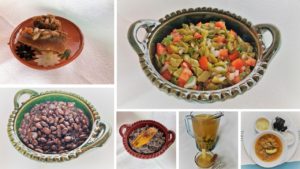Latin American Vegan Foods High in Calcium

By Odette Olivares Sanchez, VRG Intern
Latin American gastronomy is the result of traditional indigenous cuisine enriched by ingredients that Spaniards, Africans, Portuguese, French, and people from other cultures brought on their arrival to Latin America. The diet of indigenous people used to be rich in plant foods with moderate quantities of insects, fish, and meat. They did not use to consume milk, cheese, or other dairy products, yet they were apparently able to get enough calcium from their diets.
An interesting ingredient from Mexico is cactus or nopal (as it is called in Spanish) and it is used raw or cooked in many Mexican dishes. Some people might not like it because of its slimy texture; however, it is very nutritious due to its fiber, vitamin C and manganese content, in addition to its calcium content.
In some parts of Latin America, ingredients that used to be popular in the indigenous cuisine have lost popularity in younger generations. However, governmental organizations and entrepreneurs are bringing them back because of their valuable nutritional properties.
In the case of Colombia, stinging nettles were introduced with the arrival of the Spaniards. Nowadays, they are not as popular as they once were, but they are still used in salads, quiches, soups, or stews. Due to their contribution of protein, calcium, and other important nutrients, entrepreneurs are reintroducing them in traditional products such as empanadas. In order not to cause irritation when handling them, they should be cut from the stems closest to the ground, avoiding contact with the leaves. Later, they should be cooked in boiling water with salt so that acetylcholine, the element that produces itching, is deactivated.
Cochayuyo is another traditional ingredient from Chile that has lost popularity in younger generations. This alga was commonly used in many Chilean indigenous dishes, and it only grows on the coasts of Chile and New Zealand. Its name means “sea turnip” in Quechua, the language of the group of indigenous people who settled in the Andes Mountains and occupied the area of Argentina, Bolivia, Colombia, Ecuador, Peru, and Chile. Since it is also a good source of iodine, iron, magnesium, and antioxidants, the government of Chile is trying to bring it back to the tables of Chilean families and is promoting it as a super food.
To see more, go to https://www.vrg.org/nutrition/foods_calcium.htm
Read this article in Spanish here: https://www.vrg.org/nutshell/Alimentos-veganos-Latinoamericanos-y-Altos-en-Calcio.pdf
